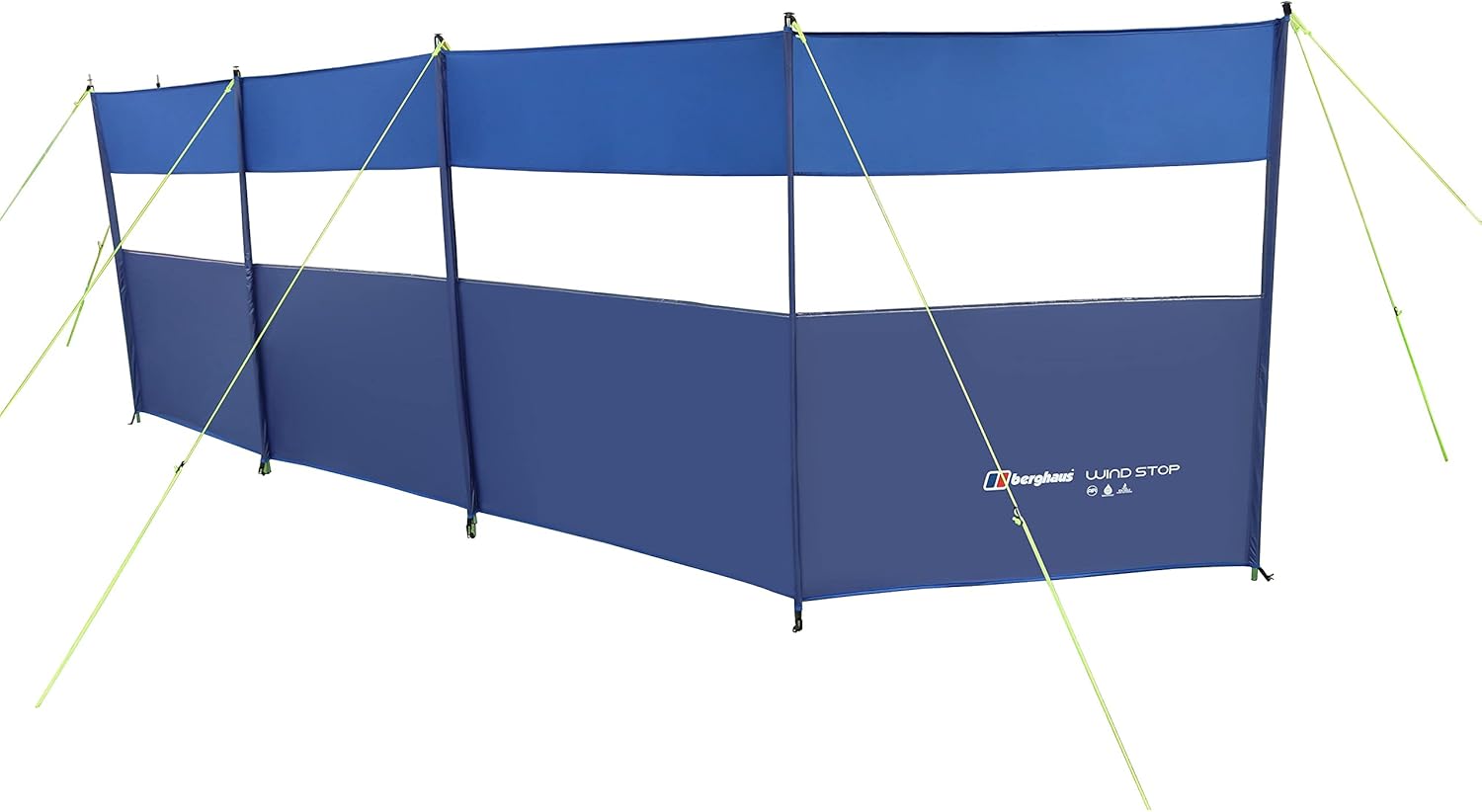
Berghaus 5 Panel Windstop with Clear Window Panels, Structured Windbreak from the Berghaus Air Tent Collection, 6 Metre Windbreak for Camping, Camping Equipment, Blue, One Size
FREE Shipping
Berghaus 5 Panel Windstop with Clear Window Panels, Structured Windbreak from the Berghaus Air Tent Collection, 6 Metre Windbreak for Camping, Camping Equipment, Blue, One Size
- Brand: Unbranded

Description
Berghaus have listened to feedback and rectified this and made the neck stretchy so it fits perfectly. Steel pole pollycotton outwell for me and I wont be change my mind on going to a airbeam tent from what I Have seen. The sectioned construction, sturdy steel poles and reflective guylines allow you to create a stable bespoke structure to shelter your campground.
com Limited is an Appointed Representative of Compare The Market Limited who is authorised and regulated by the Financial Conduct Authority. Finance is provided by PayPal Credit (a trading name of PayPal UK Ltd, Whittaker House, Whittaker Avenue, Richmond-Upon-Thames, Surrey, United Kingdom, TW9 1EH).We've just got back from cornwall and was camping in the storm it started on the Thursday night with Gale force winds and rain and the wind carried on right through Friday and at its worst on friday night with winds of up to 60mph our tent hayling 6 air coped very well the tent next door to us ripped a few more got flattened and a couple more ripped. The height and length of the wind break offers great protection from the elements, but transparent window panels allow you to enjoy visibility and natural light.
You can change your choices at any time by visiting Cookie preferences, as described in the Cookie notice. Read more about the condition New: A brand-new, unused, unopened and undamaged item in original retail packaging (where packaging is applicable). A 70Mph gust will be applying ~ half a ton of force to the side of a big family tunnel tent which is well beyond what I suspect is the design load. The ETI was founded in 1998 and works to improve working conditions in global supply chains by implementing their Base Code of labour practice, which is based on the UN’s International Labour Organisation’s (ILO) standards. As I have said many times before I'm a bit of a Berghaus fan boy and I own around 7 of their jackets, several pairs of trouser and untold amounts of base layers and I really rate the gear they make but this will still be and honest review based around my findings.
Didn’t budge in the winds no t even one slack guy line, was a bit scary at times but I’m glad I had faith in the tent and faith in that it was pitched right and I knew what we was doing. Fantastic quality Berghaus 65L backpack - great for hiking, camping and backpacking around the world! The fleece isn't marketed as waterproof at all but I have been caught out in several showers while wearing it and have managed to stay pretty dry I'm guessing due to the Windstopper membrane which seem to poses some very good ability to repel water. From your local crag to the summit of Everest, at Tiso, you’ll find the climbing and mountaineering equipment you need. The arms do however do come with very comfortable elasticated cuffs to stop the wind from getting in and of course the thumb loops of which I'm not really a fan of but I have found myself using with this particular fleece to great effect, I didn't see that one coming !
Second issue is the metal steak which goes into the ground is only about an inch long so doesn't embed effectively into the ground. Sign up here to receive marketing communications from GO Outdoors Retail Limited (t/a Fishing Republic).You should be ok our airbeam has survived up to 47mph winds,just get your pegs in well and backend of tent to wind. Used but in good working condition hiking rucksack, the weight distribution of this rucksack is excellent.
- Fruugo ID: 258392218-563234582
- EAN: 764486781913
-
Sold by: Fruugo
